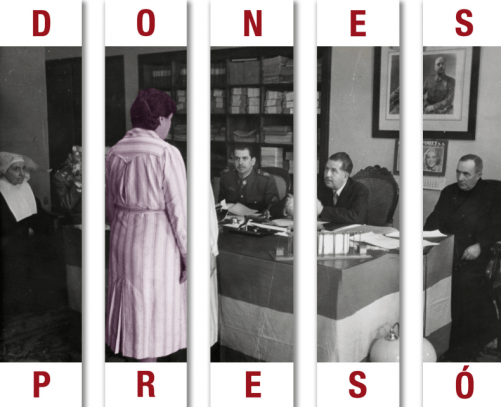The recovery of the memory of the Prison of Les Corts (Barcelona) is a process that is being carried out by the city’s civil sphere. There is still much to be done, though. The people demand public expression in an urban setting that pays tribute to the women and their children who suffered repression and condemnation in this institution, now completely invisible in the territory of Les Corts. Collective memories may fade gradually, but individual ones remain and become the engine that produces the recovery of that forgotten past. This recovery is the sum of individual actions that can be forged into a network of shared images of a common past.
In this way, the memory of the women’s prison is being recovered in Les Corts since 2010. Called “Provincial Women’s Prison of Barcelona” during the dictatorship (1939-1955), it was the Catalan Republican government that originally established it as a prison under the name of “Women’s General Correctional”. During the Civil War, political prisoners were kept there, both of right-wing ideology and from the POUM (Worker’s Party of Marxist Unification). With the entry of rebel troops into Barcelona in January 1939, the Prison of Les Corts became the Provincial Prison for women, run by the religious order of the Daughters of Charity, following the usual practice of female prisons under/during the Franco regime.
In mid-1939, the institution contained approximately 2,000 imprisoned women and 40 children. Between 1939 and 1940, 11 political prisoners were executed in el Camp de La Bota in Sant Adrià. In its extensive garden, hundreds of women were forced to work for the benefit of the religious order, especially during the early years. A sewing workshop was started in the early ‘50s. In October 1955, the prison was closed and a group of 263 women and 19 children were transferred to the prison Modelo in Barcelona. A few years later, the prison building was demolished in order to build the department store El Corte Ingles at Maria Cristina Square. The rest of the land was re-parceled and rebuilt. This radical change in the use of the area promotes the physical and social forgetfulness of one of the most important repressive State institutions.
Civil society initiated the recovery of the site: former prisoners’ relatives, organizations and associations within and outside the district, academic research groups. Citizens engaged in an open and collaborative process, which has served to restore a part of the collective memory of the city. In this context, in 2012 we started to develop a process to the establishment of a monument as a form of public expression to support and honor these women, as well as their sons and daughters, who suffered repression and condemnation in the institution. The development of a series of public art projects within the framework of the Master’s Degree in Urban Design at the University of Barcelona has served as a think tank to initiate debate at the citizen’s level, while the International Conference and Exhibition on the Women’s Prison of Les Corts Future Memorial on November 25th, 26th, and 27th will extend the debate to both experts and citizens. In the context of this event, we will discuss the ability of contemporary art to socialize collective memory and dignity of the victims, encouraging transversal and collective reflection and debate on the creation of public spaces of memory.
In 2015, the project was awarded with the Medal of Honour of the City of Barcelona.

